Reviewing Cormorant: A Classic Serif Mega Font Perfect for Publishing and Text-Heavy Projects
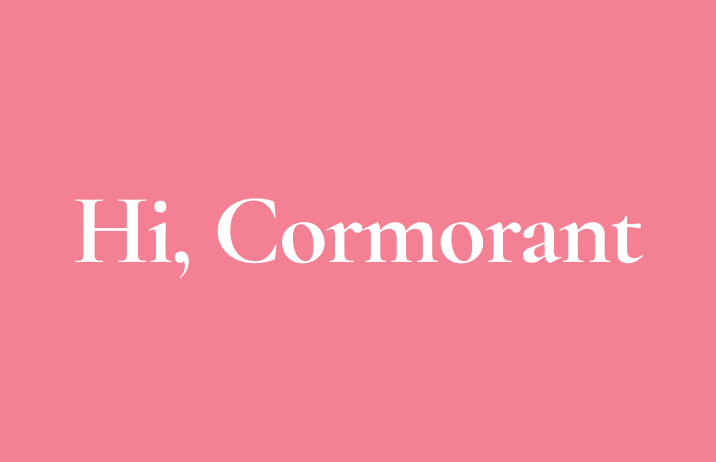
In This Issue…
How to Use Cormorant for Logo and Branding
- Font of the Week: Cormorant
- Design Idea: Original Emojis
- Color Inspiration: IBM Corporate Identity

Font of the Week
In a previous article, we introduced EB Garamond. If you like the classic vibes of EB Garamond but want more weights and styles, Cormorant might be the font for you. Cormorant is an old-style serif. An old-style serif has a “diagonal stress,” which means that the thinnest parts of letters are at an angle. The serifs are also bracketed: they are connected to the strokes with curves.
What I love most about Cormorant is its versatility. Like IBM Plex, it has many variations and depending on your project needs. You can determine which one you want to use. Cormorant has three styles: normal (Cormorant Roman), italic (Cormorant Italic), and a straight version of italic (Cormorant Upright). Today, we’ll focus on Cormorant Roman, which has two interesting variations: Cormorant Garamond and Cormorant Infant.
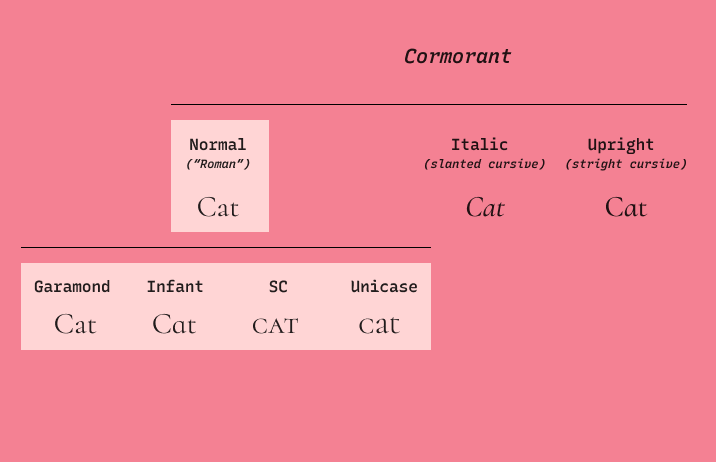
Font Details
Cormorant Garamond is convenient for blog sites, e-books, or text-heavy projects because this variation offers large counter spaces to achieve more reading comfort. On the other side, Cormorant Infant is a less grown-up version of Cormorant Garamond; the letters a, g, y are replaced with single-story shapes to make it feel more gentle. If you want a slightly less classic and more friendly tone, Infant can work for you! Other noteworthy variations: Cormorant SC and Cormorant Unicase. Both are small caps, which are great for labels and captions.
Below is a graphic showing difference in counter space, which is the circular space in the a, between Cormorant Roman and Cormorant Garamond. As you can see, the Garamond has larger counter space. This means that when text is at body size, Cormorant Garamond will be more visible.

How to use Cormorant for Logos?
Cormorant communicates classics and traditions. It’s perfect for brands that are looking for a more classic voice.
How to use Cormorant for Branding and Marketing?
Because Cormorant has many weights, it is perfect for landing pages. Cormorant Garamond is better for readability, so its Regular or Medium weights are better for body copies. The bolder weights have larger contrast and are more suited for large copies in headers and subheads. If you want a slightly more warm tone, give Cormorant Infant a try. Cormorant pairs well with Raleway.
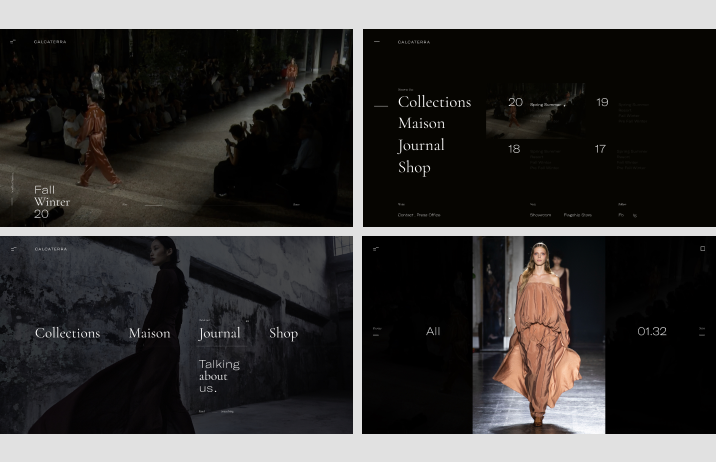
Design Idea of the Week
An Original Emoji
There’s a whole generation of children who ‘learn to read and write’ emoji before they can read and write.
Jennifer Lee, the founder of Emojination, a nonprofit advocating for representations in Emojis. (source: Vox )
It is no doubt that emojis are changing the way we communicate with each other. Among the ones we use, the pointy finger emoji is one of the most popular ones on Social media for people sharing their content.
👉 But where does the pointy finger motif come from? Printers made original illustrations, like the pointy finger motif, called printer’s cut back in the day. It was a signal and command for people to read whatever it was pointed to. The pointy finger became a staple in posters, bills, and ads. in the 19th century US.
Creating original emojis, emotes, and reaction gifs as part of your brand can be memorable for your businesses. Streamers are already doing this on Twitch and having successes. Their fans have access to premium emotes and unique gifs.
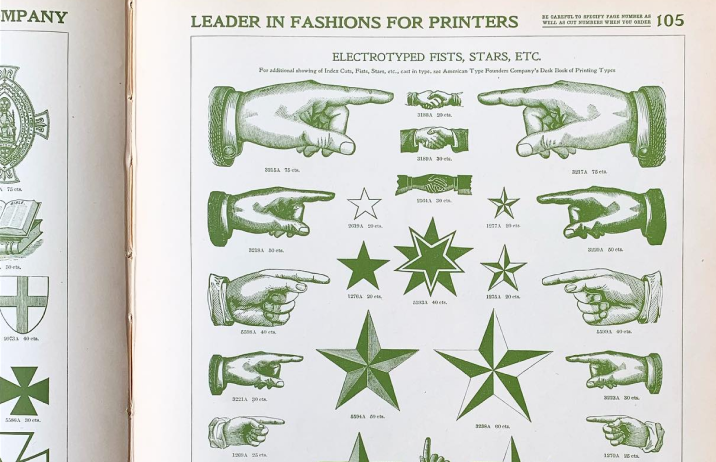
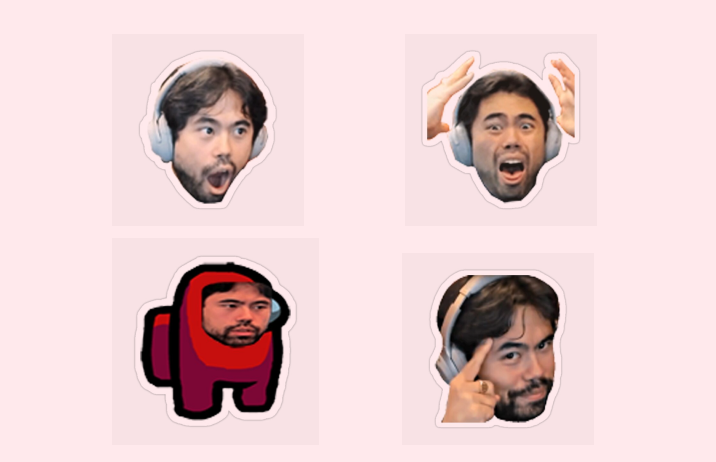
Color Inspirations of the Week
IBM Corporate Identity
This older brand identity is one of the most well-known corporate identities created by Paul Rand, who is sometimes known as the father of graphic design. He convinced businesses that design, especially Corporate Brand Identity (consistent logo and systematic visual assents for companies), was vital to help enterprises communicate their values to the public and create brand awareness.
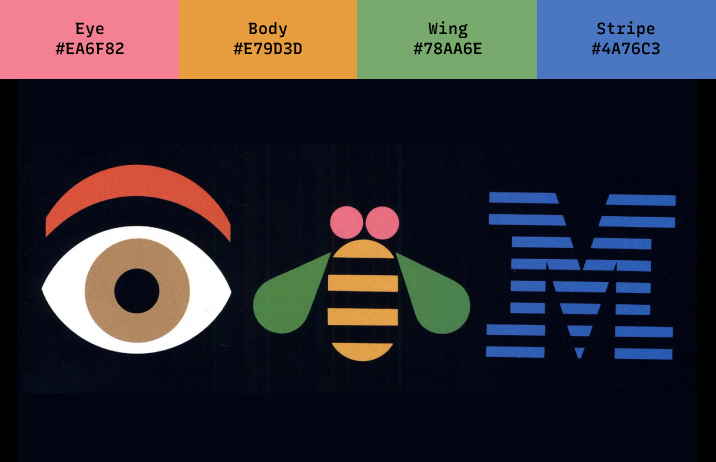
Jargon Buster!
Font Family
Font Family is a set of fonts that share design styles. For example, Helvetica Bold and Helvetica Regular, both of these are in the Helvetica Family. Another example, Cormorant Roman and Cormorant Italic are in the Cormorant Family.
Creative Prompt
Emoji Time
Create your own emoji or gif! If you need a little technical tutorial, here is a quick video. I would love to see what you create via Twitter or Email.
Thank you!
Thanks for being here for another week. Cormorant is available here. It is designed by Christian Thalmann.




